Design with glass: 7 trends
The newest iconic building designs are a feast for the eyes, inside and out. Yet the competition is fierce to also offer a technological feast, whether that’s to meet the WELL Building Standard, provide the most digitally integrated building system or more.
Few building products can contribute to a building’s visual appeal and physical comfort in as many ways as glass. Whether design goals include arresting colors, expansive views, high performance or all of the above, this versatile material is a valuable component in an architect’s toolkit. As the application of architectural glass expands and transforms, it can take center stage or provide a virtually clear canvas while working in the background to help in the imagining, design and construction of tomorrow’s signature buildings.
1. The right balance of energy performance and design
Sacrificing components of an exciting, impactful design to increase a building’s energy efficiency is too often an unfortunate reality. And when the building design team is striving for the latest green building certification, the degree of flexibility and creativity narrows even further. A hard-working product that can be counted upon is high performance glass, striking an effective balance to help meet both performance and aesthetic goals.
- Thermal Performance
Coated glass offering a high thermal performance (lower U-value) helps prevent heat from escaping buildings in cooler climates. The lower the U-value is, the better the glazing is at blocking heat flow. - Solar performance
High performance glazing offers additional benefits for buildings in warmer climates, as well: It can help keep interior spaces cooler and lower air conditioning costs. Preventing overheating in summer can be equally important as preventing heat from escaping outside in cooler months.
Glass performance has an important role to play to help create a comfortable living environment for occupants. Today’s solar control glass, particularly double- and triple-silver coated products, offers very high spectral selectivity – which means they let a high amount of visible light in while keeping out solar heat.
Combining two high performance coatings in an insulating glass unit (IGU), as well as the use of triple glazed units, gives architects a powerhouse building component as they strive to meet and exceed energy performance goals.
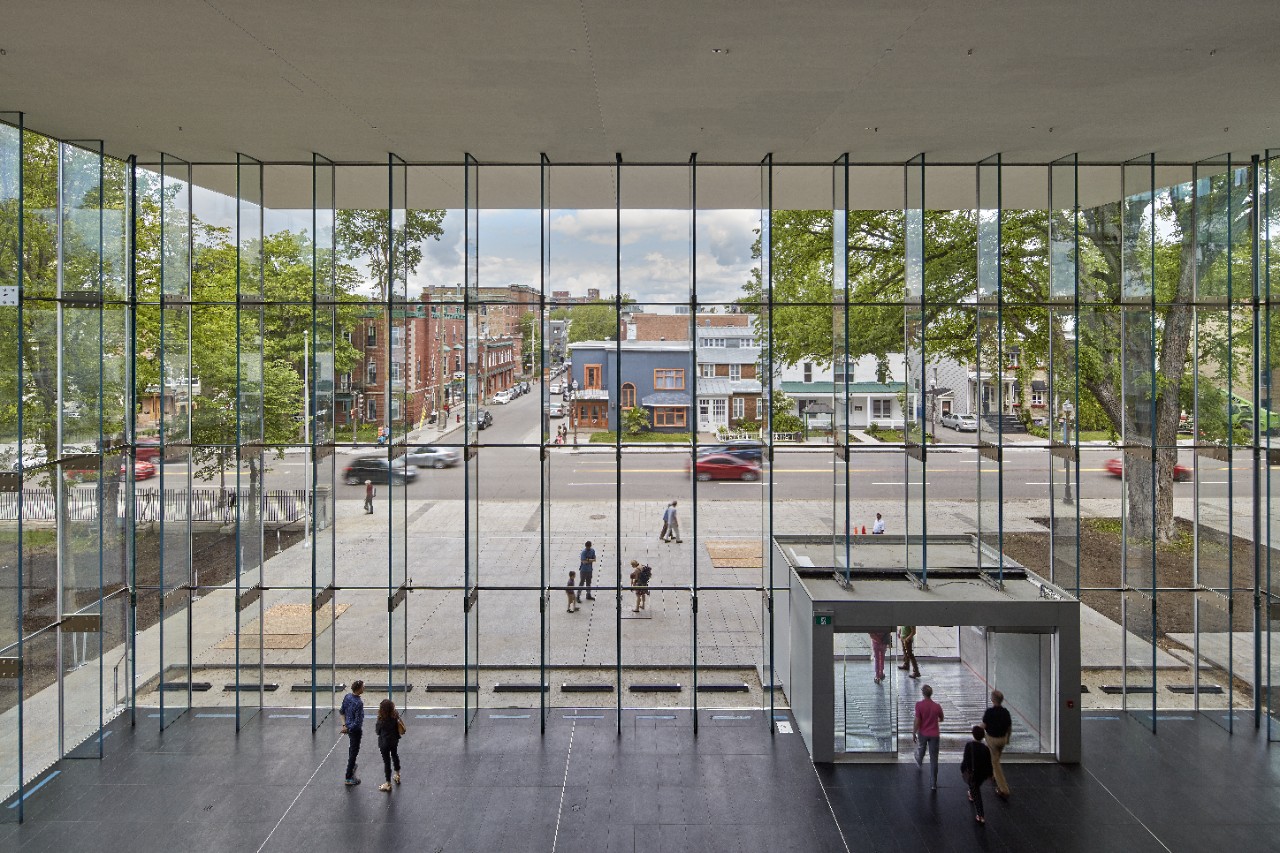
2. Connecting people with the environment
Building occupants consciously and unconsciously crave a connection with the outside environment, and as a result they can perform better and feel better – students, employees, patients – with that access. There’s a feeling that nature is beckoning to us, and we feel an inherent need to respond. Clear views only possible via glass can be the way we satisfy that need.
Oversized glass does away with what is considered the “standard” edges of a window and blurs the separation that keeps us from enjoying the benefits of outside: from views that awe us, to the warmth and glow of natural light that cheers us. The difference between a punched window and floor-to-ceiling glass is a genuine wow factor.
By improving sight lines and reducing visual impediments, oversized glass dissolves boundaries to bring occupants up close with the outdoors yet still meets energy performance requirements. And it impresses at first sight, drawing those on the outside in with larger-than-life designs and clear views to inviting, enlightened interiors.
3. Natural light and expansive, authentic clarity
In both exterior façades and interior design, color neutrality offers clarity with no compromise. Low-iron glass delivers with bright, true views.
Low-iron glass is crystal clear because it contains less iron than standard float glass. Iron gives standard glass a greenish tint that is particularly visible at the glass edge.
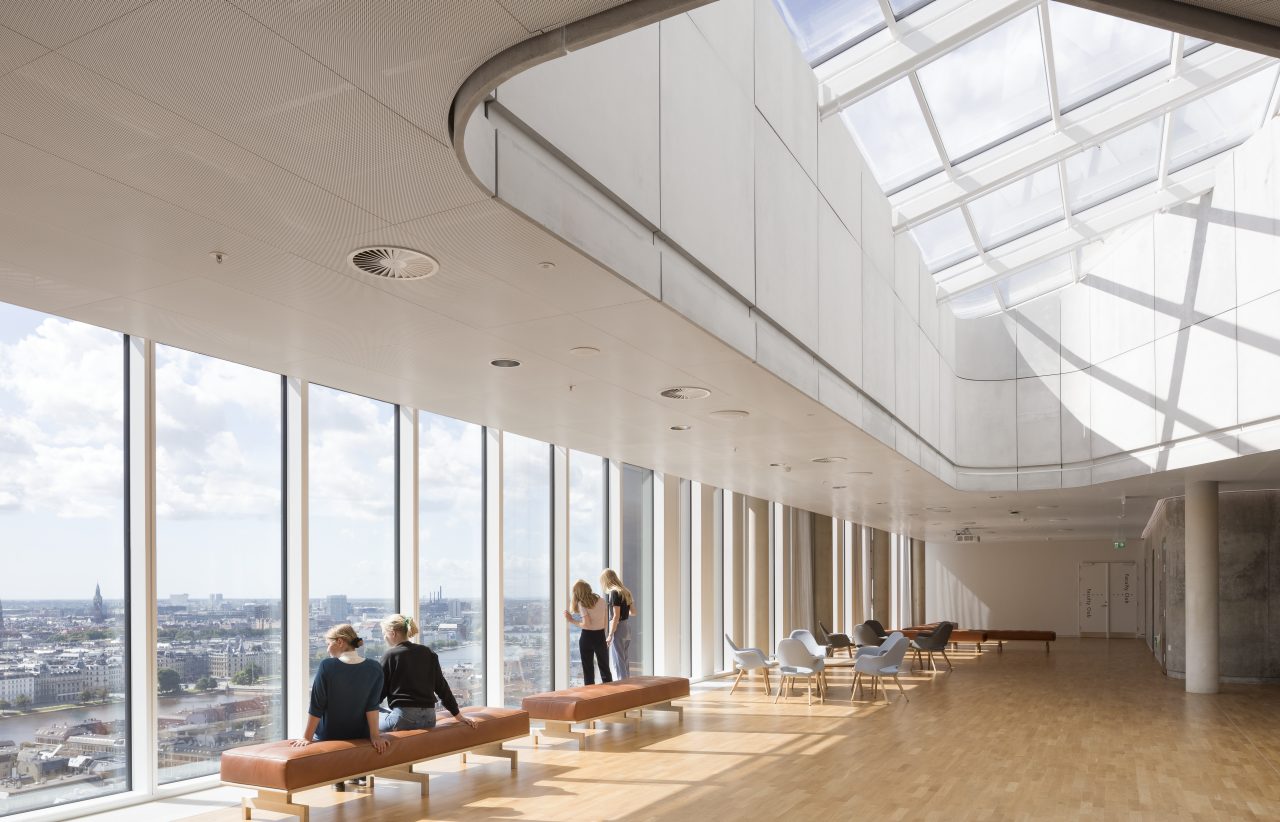
When low-iron glass is paired with oversized lites, those sought-after clear views are significantly impacted. Incorporating both into designs results in dramatic spans of glass and brilliant, unobstructed sightlines. All without sacrificing performance.
4. Invisible yet durable security
People make buildings come alive, whether they are the occupants living and working within the walls, the commuters moving by the mixed-use building in an urban environment or the children pouring in and out of schools.
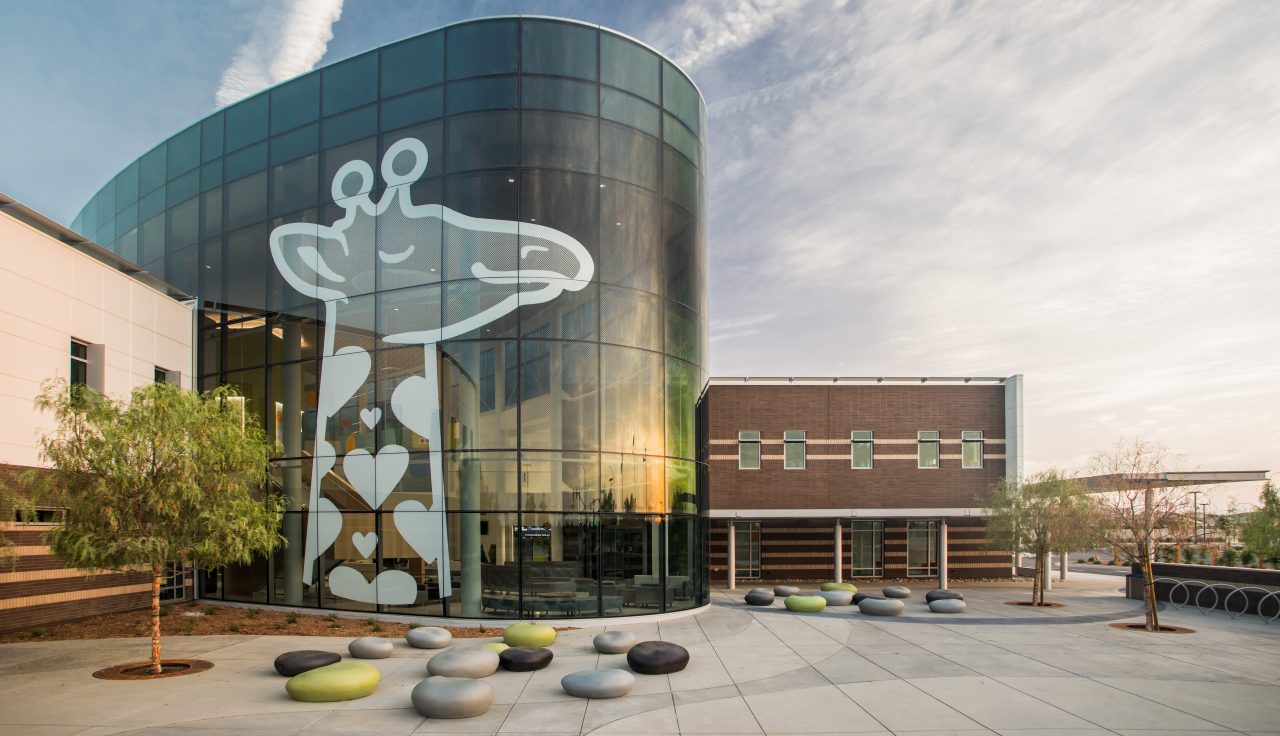
Laminated glass wraps the occupant and shields the pedestrian with comfort and safety because it helps:
- Lower the risk of injury from broken glass because it will usually stay in the frame - it is often classified as safety glazing per most building code requirements. Cities, municipalities, etc., are increasingly mandating laminated glass for structural glass walls and glass canopies.
- Reduce sound transmitted through the glass and improves interior acoustic comfort.
- Offer unique aesthetic options via colored or translucent polyvinyl butyral (PVB) interlayers. Translucent PVB delivers the additional benefit of creating some privacy while light can still shine through.
- Address a variety of external threats when customized, including wind-borne debris, blast/ballistic, and forced entry.
- Block over 96% of UV transmission which can assist in protecting interior spaces from fading.
5. Extreme performance with compelling color
Color in combinations or one distinctive monolithic look makes for a unique façade. Tinted glass can bring that something extra to the building aesthetic, plus the advantage of stronger solar performance.
Subtle blue or striking grey combined with high performance coatings boosts the solar performance compared to coatings on clear glass. Tinted glass accomplishes this by increasing the amount of solar energy absorbed by the glass. Additionally, tinted glass can also reduce glare.
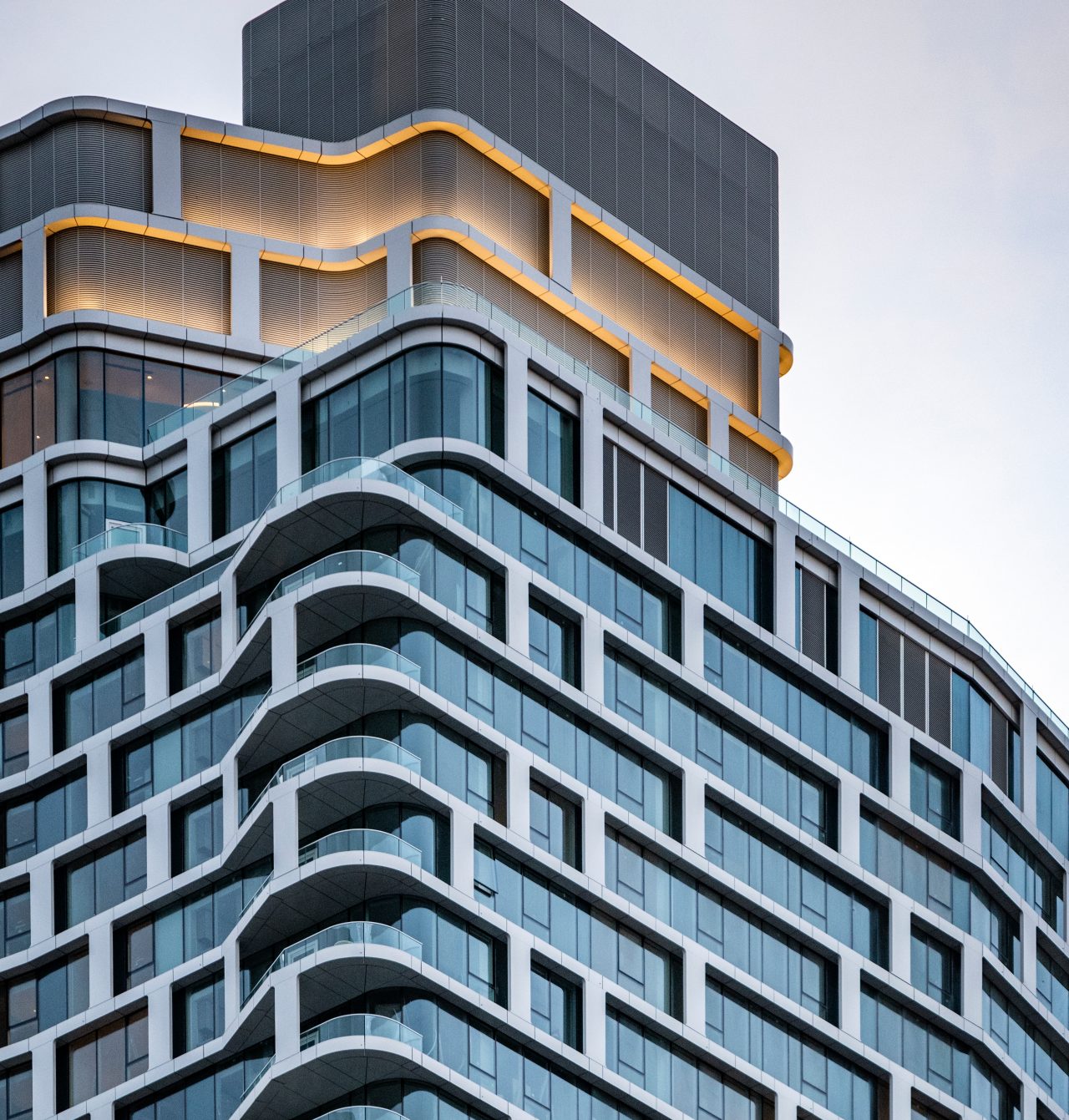
6. Beauty with bird safety in mind
Bird collisions with glass is a growing concern around the globe. Requirements to deter birds from flying into glass are becoming more stringent. Fortunately, there are many architectural solutions that seamlessly pair safer conditions for birds with high performance coated glass:
- UV patterned glass is transparent and almost invisible to the human eye in most viewing conditions.
- Coated glass with acid etch features a variety of visible patterns.
- Ceramic frit dots and lines can also be used as another alternative to create visible bird-strike deterrents for glazings.
Expanding bird-friendly offerings are a work of innovation and the clear answer when seeking high performance glazing that does its part to help protect birds.
7. Restoring for today
The call for environmental stewardship and to find alternatives to new construction and the energy it consumes – not to mention the continued energy use of the resulting building – leads the architecture and construction community to retrofitting, recycling and upcycling options.
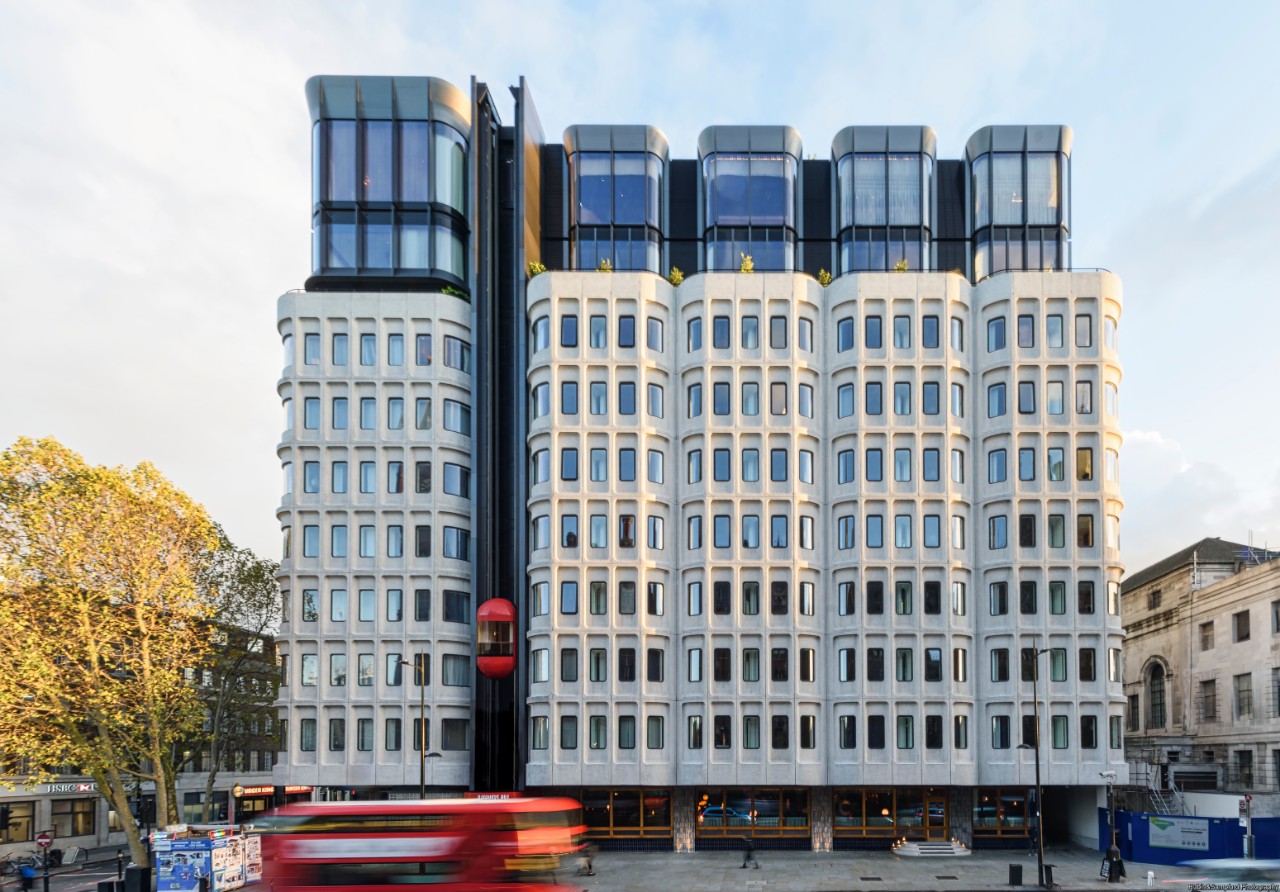
In many cases, the value in retrofitting a building goes beyond preserving materials; often there comes a groundswell of goodwill from neighbors and communities to see a cherished structure come back to life or a space being thoughtfully repurposed.
Windows in older buildings are frequently single pane glass without high performance coatings. Replacing this inefficient glass with IGUs containing coated and/or laminated glass adds potential energy savings, safety and security.
Trends evolve and change, and the next big idea that will change skylines lies just past the horizon. Perhaps your next design will feature impossibly vast spans of glass, sparkling clarity, protective laminated glass, a nod to bird safety or an unexpected twist on retrofitted glass. Whether you apply one of these or all of the above, it’s safe to assume the project will be the most progressive example of energy efficient construction.


.jpg.transform/rendition-470-280/img.jpg)
